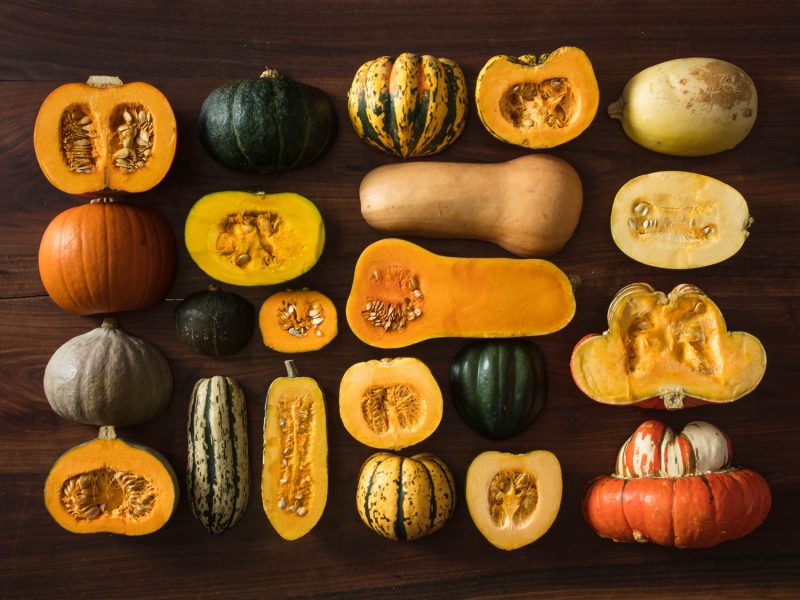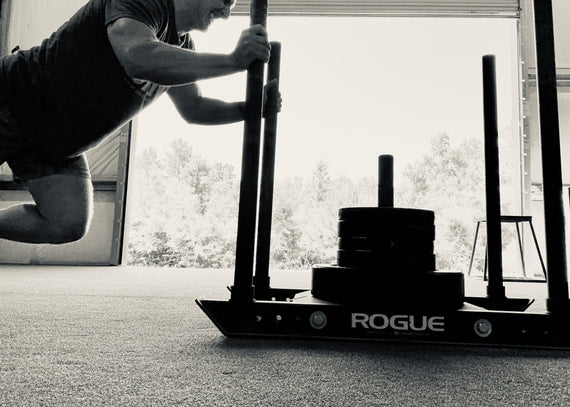Fall is here and so are the seasonal produce! Are you a little intimidated by cooking with those big beautiful squashes? You shouldn't be. Once you know what they are and how yummy these guys can be, you'll be making your weekly meal plan all season with them!
Most squash are delicious if you have time to roast them and let the natural sugars caramelize. Depending on size of the pieces you cook, most are good to roast around 400 degrees for 45 minutes.
Splitting them open and scooping the seeds out is the hardest part, so if you want to skip that part just cook them in a pressure cooker! Simply pierce the squash with knife holes and set it and forget it. A good start time would be 15 minutes for a 3 pound squash, then add a few minutes for every pound after that. You'll be able to cut and scrape out the insides with ease.
In this article we break down some of the different winter squashes you can cook with, along with CK Recipes to get you started. And great news—most winter squash are interchangeable, so feel free to substitute them out in the different recipes. Experiment with a new one you've never tried before!
Got some other ideas for us? Post them in the comments below! We'd love to hear how you use your winter squashes!
Acorn Squash

One of our favorite Winter Squashes to eat! It has a mild sweet taste that goes well with sweet or savory flavors. You can even eat the skins if you cook the squash long enough! Split them in half, scoop out pulp and rest in oven at 400 degrees for about an hour. You can try roasting them with a bit of cinnamon or try our Stuffed Acorn Squash recipe!
Butternut Squash

Here’s one we use often, but it is a booger to cut open. We definitely buy the fresh pre-chopped when available. Butternut is a great substitute for sweet potatoes, though either one are great choices!
The butternut squash beats the sweet potato with fewer calories per serving and lower carb and sugar counts. The sweet potato, however, does provide more fiber and protein. Check out how they compare below!
|
BUTTERNUT SQUASH (1 CUP) |
SWEET POTATO (1 MEDIUM, ABOUT 1 CUP) |
|
| Calories | 63 | 130 |
| Fat (g) | 0.1 | 0.0 |
| Carbs (g) | 16.4 | 33 |
| Fiber (g) | 2.8 | 4 |
| Sugar (g) | 3.1 | 7 |
| Protein (g) | 1.4 | 2 |
Butternut is loaded with Vitamin A, a powerful natural anti-oxidant and is an essential vitamin for optimum eye-sight. It is rich in the B-complex group of vitamins like folates, riboflavin, niacin, vitamin B-6 (pyridoxine), thiamin, and pantothenic acid. Did you know you can eat butternut squash seeds? The seeds are a good source of dietary fiber and mono-unsaturated fatty acids, rich in protein, minerals, and numerous vitamins.
Spaghetti Squash

Spaghetti squash has a very mild, neutral flavor, but also slightly sweet. Because of the mild flavor, it is perfect vehicle to do stuffed baked squashes with any topping you want! Spaghetti sauce, enchilada stuffed squash, ANYTHING. Many people like to use the “noodle” strands as a substitute for pasta, though it can be a little watery, or have a slight crunch to them depending on the squash.
Most times people do not want to fool with them because they are so hard to split open. Try this next time: Using a sharp knife, poke a few small slits in the squash skin; poke in a dotted line along where you plan to slice the squash in half. Then microwave the squash 4-5 minutes; cool slightly.
Or use a little muscle. I use a heavy chef knife, stab it at the top and work the knife down one side, then do the same on the opposite side and it cracks open, then scoop out the seeds.
To cook: bake in oven at 400 degrees for about 40 minutes. Depending on the size of your squash, this could take more like an hour. Or for a faster version you can boil for about 10 minutes. But beware, you can over cook this and noodles become soggy. So keep checking! If the noodles fall out easily when scarped with fork you know it is done!
Instapot: Simply pierce the spaghetti squash with a knife to vent, and then place it on the trivet with a cup of water in the pot. Cook on high pressure for 15 minutes for a 3-pound squash. Add a few minutes for every pound over.
We’ve used spaghetti squash in numerous recipes like the Buffalo Chicken Casserole and CK Turkey Stroganoff, Mel’s Shrimp Scampi (Cookbook), Chili Mac or Asian Beef & Noodles!
Pumpkin

Pumpkins contain antioxidants, such as alpha-carotene, beta-carotene and beta-cryptoxanthin. These can neutralize free radicals, stopping them from damaging your cells. Pumpkin is high in vitamins A and C, which can help boost your immune system, as well as vitamin E, iron and folate.
It is very low calorie, and much lower carb than sources like rice or potatoes, as pumpkin is actually 94% water. So when cooking it, it make take a little longer if using it in baked goods like the CK Pumpkin Pancakes. Low and slow should help the water evaporate and not burn the outside of your pancakes!
Pumpkins can be hard to prep, but there are plenty of canned or pre-cut options. When choosing canned version be sure to read the ingredients label. Not all canned version are 100% pumpkin puree. Make sure to not choose one with added sugar!
Want to make your own pumpkin puree? Its pretty easy if you have a pressure cooker. We found this helpful blog post on how to do it!
Below are a few winter squashes you may have never used before, but you could certainly use them interchangeably with other squashes and cooked the same way.
Buttercup Squash

A small, usually dark-green squash, and can be compared to butternut squash, but just not as sweet.
Carnival Squash

The carnival squash is a cross between the sweet dumpling squash and the acorn squash. It is nutty and sweet in flavor, much like butternut squash. To cook them you want to split or quarter them. Slow cooker: Cover and cook on high for 2 1/2 to 3 hours, or until the squash is fork-tender. In oven, bake at 375 for 25 to 35 minutes, or until tender.
Delicata Squash

Delicata very similar to an acorn squash and butternut! And you prepare and cook it just like an acorn squash. You can even eat the skin! Just make sure you scrub wash it good. Best tasting way to eat it is roasting at 425 degrees until brown edges form. But you can also pop these guys in the slow cooker. To prepare you will first wash and scrub the outside, cut the stems and bottom side flat, then cut down the center long ways, scoop out the seeds and finally slice pieces into half moon shapes.
Hubbard Squash

These guys are pretty darn big and usually most people do not want to deal with the prep. Much like any other winter squash, its interchangeable with most! Its orange-yellowish flesh is very sweet and taste like a cross between a sweet potato and a pumpkin. Next time you are at a farmer's market and see some big, ugly looking things, it's probably a Hubbard squash!




